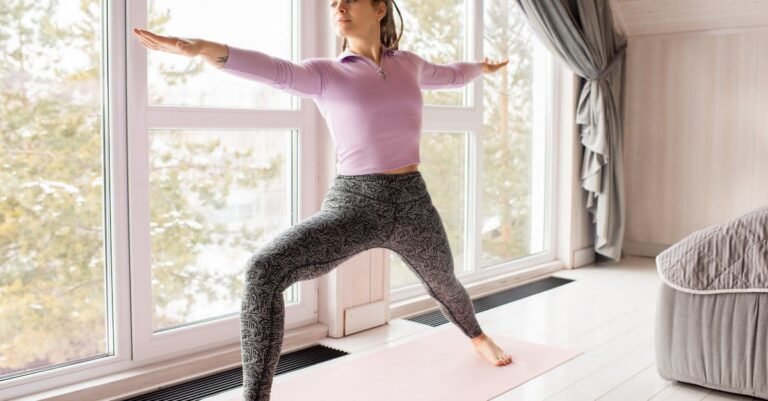Your living room is probably the heart of your home, right? It’s where you kick back after a long day, catch up on your favorite shows, or chat with friends and family. But what happens when just moving around that comfy space starts to feel like a challenge? Maybe getting up from your super-soft sofa isn’t as easy as it used to be, or you feel a little unsteady walking across the room. It can be frustrating and make you feel like you’re missing out. Well, you’ve come to the right place! We’re going to explore some awesome, simple tools that can make a massive difference, helping you (or someone you care about) navigate the living room safely and keep enjoying that special space.
Why Your Living Room is Key (and How Mobility Fits In)
Think about all the things you do in your living room. It’s not just about watching TV. It’s where you might read a book, have a coffee, maybe even do a puzzle or play a game. It’s your relaxation zone! When moving becomes tricky – maybe because of age, an injury, or just feeling less steady – it can really change how you use and enjoy this room. Suddenly, that favorite armchair feels like a trap you can’t easily escape, or crossing the floor to grab the remote feels like a risky adventure. The good news? You don’t have to give up your comfort or independence. Sometimes, just a few clever tools can help you keep enjoying your living room just the way you like.
Rise and Shine: Getting Up from Your Favorite Chair
Okay, let’s tackle a big one: sinking into a comfy chair is great, but getting back out can be tough! Soft cushions and low seats can make standing up feel like a real workout. One fantastic helper is a lift chair. These look just like regular cozy recliners, but they have a hidden superpower: a quiet motor that gently tilts the chair forward, lifting you to an almost-standing position. It takes away the struggle and strain.
Not ready for a whole new chair? No problem! There are also seat assists or uplift cushions. These are like special cushions you put on your existing chair. They often use a spring or a gentle piston system to give you a little boost as you start to stand up. They’re more portable and budget-friendly.
Imagine this (just an example!): Let’s say your dad loves his old armchair, but getting up takes him a few tries. A seat assist cushion could give him just enough help to stand up smoothly on his own, making him feel more independent when he wants to get up for a snack or answer the door.
Steady Steps: Making Movement Safer
Feeling a bit wobbly when you walk across the living room? Worried about tripping over a rug or just losing your balance? Making the journey from the sofa to the door safer is super important. You might think grab bars are only for bathrooms, but nope! Putting sturdy grab bars in smart spots in your living room – maybe near where you usually sit, or along a wall you walk by often – can give you something secure to hold onto. And they come in lots of styles now, so they can blend right in with your decor.
Another simple trick? Furniture risers. These are sturdy little blocks you put under the legs of your sofa or chairs. They lift the furniture up just a few inches, but it makes a huge difference in how easy it is to sit down and, more importantly, stand back up without straining.
Picture this (another made-up scenario): Someone’s recovering at home after knee surgery. Walking is tough, and they feel nervous crossing the open space in the living room. A stylish grab bar mounted discreetly along the wall could be their lifeline, giving them the confidence to move around more freely.
Reach Out: Keeping Essentials Close By
Bending down to pick something up or stretching awkwardly to reach the lamp switch can be uncomfortable, or even risky if you’re feeling unsteady. That’s where reachers, sometimes called grabbers, come in handy! These tools act like an extension of your arm, with jaws at the end to grab things. Dropped your keys? Need the newspaper off the coffee table? A reacher lets you grab it without bending or straining. They come in different lengths, so you can find one that works perfectly for you.
Another great idea is an over-chair table. Think of those little tables they have in hospitals that swing over the bed, but designed for your living room chair or sofa. They provide a stable surface right next to you, perfect for keeping your remote, phone, drink, book, or medication within easy reach. No more leaning way over!
Think about this (just a quick example): You’ve just gotten comfy on the sofa with a blanket, and darn it, the remote is on the floor! Instead of the hassle (and potential ouch) of getting up or bending down, you just use your handy reacher tool. Problem solved!
Little Helpers, Big Difference: Small But Mighty Aids
Sometimes, it’s the small things that make a big impact. Don’t overlook these simple helpers!
- Non-slip socks or slippers: Wearing these around the house, especially on wood or tile floors, can give you much better grip and reduce the chance of slipping.
- Lap trays: A sturdy tray that rests on your lap gives you a flat, stable surface for eating meals, writing a letter, or working on a craft project while seated comfortably.
- Transfer aids: For folks who need a bit more help moving, say from a chair to a wheelchair, things like transfer belts (worn around the waist for a caregiver to hold) or pivot discs (a spinning disc placed on the floor to help turn) can be really useful, though often used with assistance from someone else.
Here’s a thought (another illustration): Trying to enjoy soup on the sofa can be tricky. A lap tray provides a secure spot for your bowl, so you don’t have to worry about spills or awkward balancing acts.
Putting It All Together: Creating Your Comfortable Space
So, we’ve talked about tools that help you get up (lift chairs, seat assists), tools that help you move safely (grab bars, furniture risers), tools that help you reach things (reachers, over-chair tables), and even some small but mighty helpers (non-slip socks, lap trays). The key is figuring out what you need most in your living room. Think about your daily routine. Where do you struggle a little? Is it getting out of your favorite chair? Reaching the lamp? Feeling steady when you walk to the kitchen? Once you pinpoint the tricky spots, you can choose the tools that will make the biggest difference for you. Remember, even one or two small changes can make your living room feel much safer and more comfortable again.
Making your living room a truly comfortable and accessible space is totally doable! It’s not about admitting defeat; it’s about being smart and using tools that help you keep living life your way. We’ve looked at everything from lift chairs and seat assists that give you a boost, to grab bars and furniture risers for extra stability, and handy reachers and tables to keep things close. Even simple things like non-slip socks can play a part. The goal is to find the right mix of helpers that lets you (or your loved one) continue relaxing, socializing, and just plain enjoying your living room without worry or unnecessary struggle. It’s all about maintaining independence and safety in the coziest room of the house.










